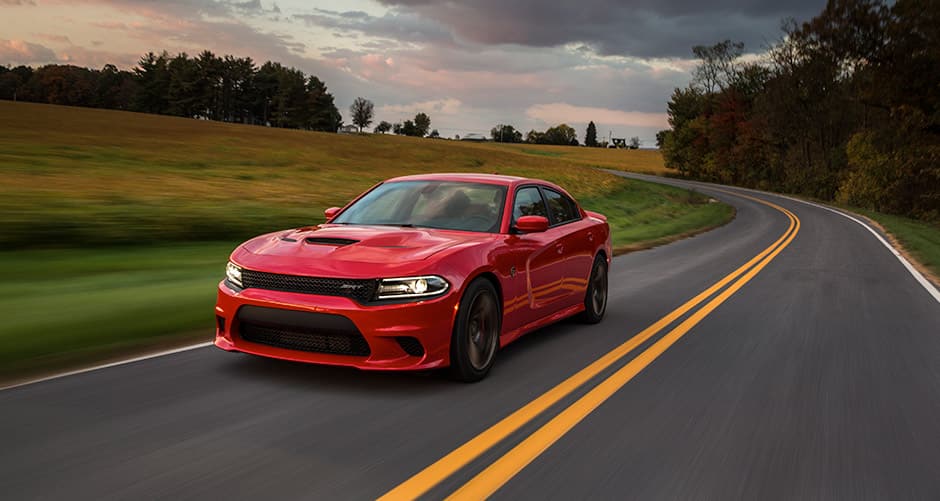
The First and Second Generation
In 1965, the Dodge Charger was debuted as the fastback version of its Coronet midsize car. However, it was not too far off from the design of the Coronet with its simple unibody structure with unequal length control arm front suspension which used torsion bars as its springing medium and solid rear axle semi-elliptical leaf springs in the back. The torsion bars were basically the only feature that differentiated the Charger from the Coronet. Just like the Coronet, the Charger was a large and in charge vehicle with measurements of 203.6 inches long, which was a complete 22 inches longer than the 1966 Mustang. Between 1968 and 1970, the Dodge Charger became somewhat of a celebrity thanks to cameos on shows such as Bullitt and The Dukes of Hazzard. This version of the Dodge Charger is referred to as the best-looking car that Chrysler had ever made with its bold nose, robust fenders, square-cut hard-top roof, tunneled rear window, and the slight flip on the trailing edge of the deck lid. Underneath it's show-stopping exterior was essentially the same car with the entire chassis and simple suspension system from the first Charger. The overall measurement of this Charger was 208 inches making it another 4.4 inches longer than the already large 1967 model.
The Third and Fourth Generation
Between 1971 and 1974, the Dodge Charger began to face emissions and safety regulations that were never an issue before and essentially had to slim down in order to combat these new regulations. Although the Coke-bottle shape was still an essential design point, this third generation Charger had swoops where the previous had creases and the front grille was no split into halves with each half surrounded by chrome. Also featured was the choice of an exposed or hidden pair of round headlamps, which depended upon the trim level. A total makeover was received by the cockpit area with new semi-fastback rear window transitioning into a deck lid with an integral ducktail spoiler. This third-generation Charger would now run a 115 in. wheelbase, which meant it had been reduced by 2-in. A total of six new models were available which included the base Charger, the Charger 500, the Charger 500 SE, the Charger 500 Super Bee, and the Charger 500 SE. The fourth generation of the Dodge Charger tried to make a better attempt at fastback styling with a formal roof line and a nose featuring single round headlamps that were housed in their own binnacle. The 1975 Charger was only offered as an SE with a 5.9-liter V8 with a two-barrel carburetor version that was able to reach up to 180 horsepower. The optional four-barrel version it would be able to reach about 200 horsepower and the only transmission available was the three-speed automatic.
The Fifth and Six Generation and the Future
The fifth generation Dodge Charger was unlike any Charger before it. In 1979, it was presented as the Omni 024 and was styled as a hatchback three-door coupe that used a front-drive platform. The Omni 024 used a transverse-mounted four cylinder engine that sent thrust through a manual or automatic transaxle. Its front suspension was equipped with MacPherson struts while its rear was a beam axle on coil springs. In 1982, the Charger was upgraded with a larger and optional 2.2-liter engine that could reach up to 84 horsepower and the standard 1.7-liter engine was able to reach up to 63 horsepower. Also, the Charger was equipped with either the standard five speed manual or a three speed automatic. 1983 would come with Chargers equipped as front-drive small hatchbacks and were powered by either the 1.7-liter engine or the 2.2-liter engine with options of either a four or five speed manual or a three-speed automatic trans-axle. Fast forward to 2006 and the Dodge Charger returned as a four-door muscle car available in two different trim levels. The SE included a 250 hp, 3.5-liter V6, 17-inch wheels, air conditioning, and a tilt-telescoping steering wheel. Even more luxury was available with the SXT package that added alloy wheels, a power driver seat, a 276 Boston Acoustics sound system, and leather-wrapped steering wheel. The R/T was designed for excellent performance with a 5.7-liter Hemi V8 with 340 hp, dual exhausts outlets, larger brakes, leather upholstery, 18-inch wheels, and a tire pressure monitor. 2007 created a smaller 2.7-liter V6 with a four-speed automatic, which would become the new base powertrain. The Dodge Charger has had a long and full history of being the world's iconic muscle car whether its been helping the Duke Boys out or just your average joes.